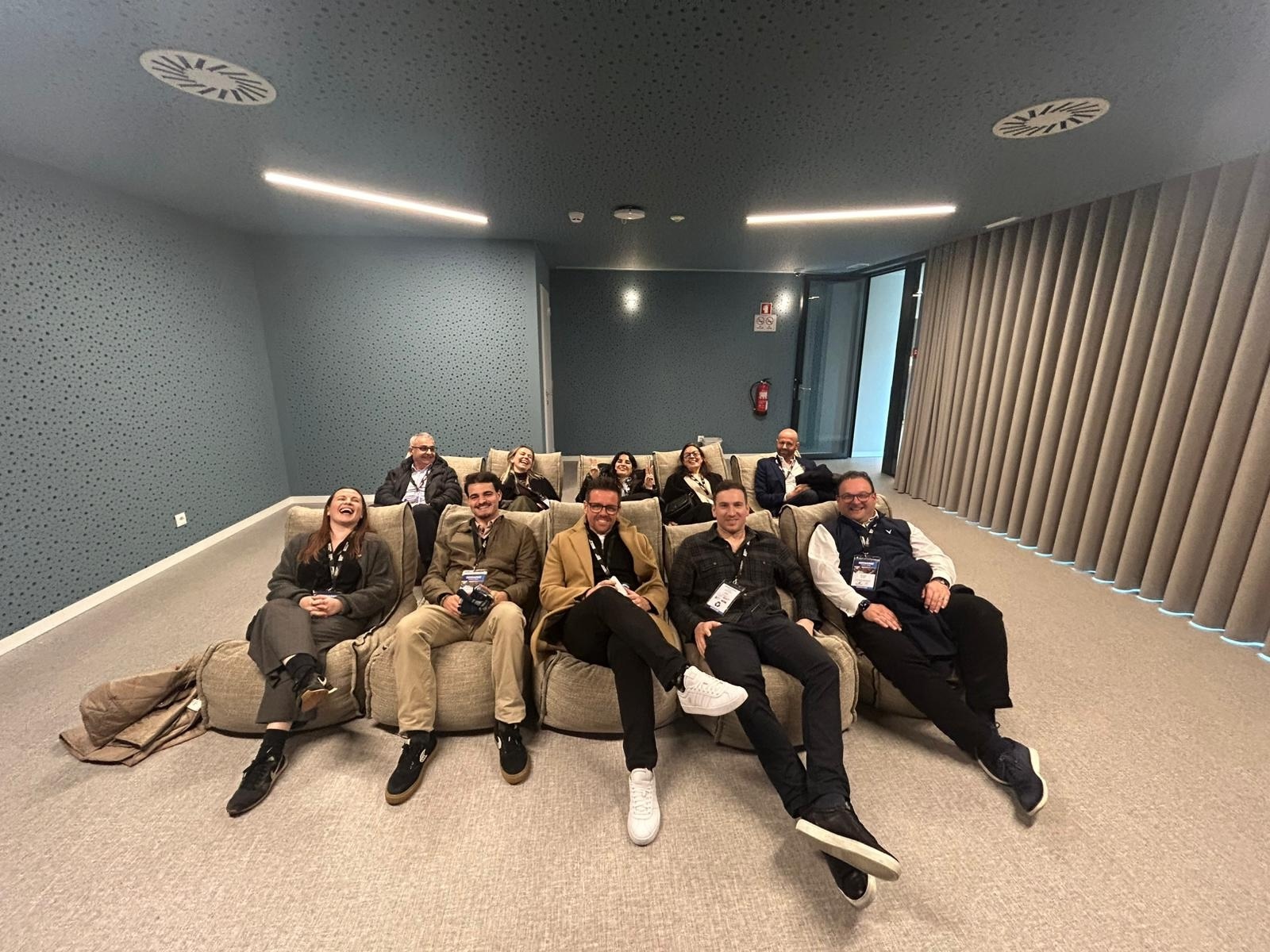
In the latest IHM Urban Living webinar, editor-in-chief George Sell hosted a discussion on “Coliving: fad or phenomenon – will coliving stand the test of time?”; a session kindly sponsored by Res:Harmonics.
The webinar was one of a regular series hosted in the run up to URBAN LIVING FESTIVAL 2020: stay-live-work, which takes place on November 25 and 26 at Tobacco Dock in London.
Joining Sell in the discussion were Douglas Edwards, managing director and head of equity raising, CORESTATE Capital Group; Joe Persechino, head of residential and student accommodation, AXA IM – Real Assets; Mathias Saleborn, managing director, EMEA and APAC, BridgeStreet; and Mindy Teo, deputy managing director, The Ascott Limited.
The discussion centred around the concept of coliving, including how Covid-19 had affected the sector, the emerging operators to look out for and predictions ahead for the next five years.
Firstly, the panel were asked to describe what coliving meant to them and what such a project would need to include. Joe Persechino began by saying that coliving projects focus on incubating the way we live, work and play into purposefully designed properties, and should be supported by a professional service model around a common theme, such as sustainability, which is a big trend in the current market. He added that coliving should be seen as another option on the residential spectrum for people to live in, rather than necessarily replacing something.
Both Douglas Edwards and Mindy Teo concurred with the sentiment of coliving projects incorporating sustainability into their business models, with Edwards pointing out that while the term lacks a clear definition, the concept has been aimed typically at a defined social group such as millennials and Gen Z. However, at CORESTATE Capital Group, he said they were looking to move generational interest in coliving into the “silent” generation and baby boomers, as there is both a demographic and age element when it comes to service. Teo expanded on Edwards’ point by emphasising the importance of programming within coliving projects, such as appointing community managers to engage residents with the local community and businesses, thereby accelerating the shift of coliving from being a “pure residential play towards a hospitality model”.
BridgeStreet’s Mathias Saleborn said the challenge was to inform and convince buyers that the coliving concept was one that could work “really well”, as the price point is attractive to corporations providing two- to three-month project businesses. Next up, the panel discussed how Covid-19 had affected the sector in terms of occupancy and operating procedures, with Teo claiming that Ascott in Singapore was able to maintain at least 90 per cent occupancy across its 329 units due to getting long-term corporate business.
When asked about how Ascott was adapting to maintain its sense of community, she said: “The shared kitchen was very important and well used as people were eating out less. People who stay with us crave social interaction and they still hang out in social spaces together. We also switched to virtual events to engage with our guests in a different way and gain greater brand awareness.” The importance of building human interaction during lockdown was echoed by Edwards and Persechino, as they said existing assets had seen no significant drop in demand at the time. As the conversation developed, attention turned to how customer appeal for the sector was broadening, as Sell cited a study in London which highlighted that the average age and average length of stay in coliving projects was going up, This countered the perception that coliving is predominantly a market for young professionals.
The general consensus among the panellists was that not only were coliving and serviced apartment developments seeing more long-term stays due to lockdowns and travel restrictions, but the age groups of those staying there had expanded since the start of the pandemic. At Ascott’s co-living lyf brand, Teo said the average age of guests had been around the 30 year-old mark rising towards 40 and 50 year-olds, while Persechino said AXA, which had “dabbled” in co-living in converting residential into multi-generational units, had seen its target market grow from the 25-45 year-old bracket to 25-70 year-olds. The latter attributed this to the number of divorcees and widowers seeking to downsize as a result of family changes during the pandemic, which was creating a blend of age demographics living together in the co-living environment.
Edwards added that loneliness was driving these trends, and by extension coliving was a mitigation of loneliness, which was bringing communities of late-20 year-olds and early-30 year-olds together. Meanwhile, it became clear from the discussion that operators are having to account for cultural differences in terms of which spaces are shared or private, how large these spaces are determined by the length of stay and the perspective of whether the projects are residential or commercial. While Ascott, which is looking to move into the European space in the near future, has seen that millennial customers in France are less willing to share their spaces than their counterparts in China, Edwards and Persechino honed in on the fact that “one model doesn’t fit all” in Europe but that the market was moving towards “some type of standardisation in terms of size and space and shared areas”.
The next topic of debate was whether coliving could now be seen as a mainstream asset class for investment; a question directed at the investors [Persechino and Edwards]. As an institutional investor, Persechino candidly admitted that the concept could not yet be seen as mainstream as there are still significant hurdles to overcome. These obstacles include gaining confidence in an operator for them to deliver a business plan, and whether or not they have a track record of providing short-, medium- or long-term stays to carry out a portfolio at scale for investors to underwrite the project. Likewise, Edwards maintained that there was “definitely” interest and “capital” available for the coliving marketplace for medium- and long-term stays.
At the same time, speaking to his counterparts in Europe, he stated his belief that investors would rather have co-living tied to something which they already understand – such as PBSA [Purpose built student accommodation] – therefore, it is important to find a balance between both sides as they are liable from operational, design and return perspectives. Finally, the panellists returned to the overarching theme of the webinar to lay out their opinions on the co-living concept and their predictions for the space over the next five years. Saleborn said: “What I sense is that we still haven’t defined the target audience for coliving, how big that audience is and how are we going to find those customers. There might be a compromise now between people who would normally stay in an apartment and choose to stay in a coliving instead because it suits their personality or their lifestyle a lot better. For the long-term sustainability, you need to look at how you attract corporate travellers to what you have on offer.”
Teo said: “I think coliving is here to stay but in the future, it might not be so targeted at millennials but larger groups that would appreciate the value of community. Right now the coliving market is very fragmented, there’s no global players, but I think we will see that, as well as more consolidation at affordable scale in the next five years.”
Persechino said: “Coliving has its place and it will be an option for people moving forward. There may be a bump in the road at the moment but post-Covid, we will see more schemes come online and operators fine-tune and understand their cost base. I don’t see coliving as a fad nor a phenomenon, it’s been around for at least 100 years, but the difference now is the focus on the wellbeing and community aspects. It has evolved rather than be a revolution in the residential market.”
Edwards added: “I’ve basely put it as a fundamental move underpinned by demography and the change in urbanisation. Coliving is a factor of life and it will remain a factor – it will take time, but it has its place in a micro living portfolio, and the size of it depends on demand.”
To watch a full recording of the webinar, click here.
The next Urban Living webinar will be on the subject of the hotelisation of real estate, and what space / living-as-a-service will look like in the new normal. It will feature Giles Horwitch-Smith, managing director, Res:Harmonics; Brett Million, strategic partnerships director, NewFlex; Benjamin Oeckl, CEO, BelForm; and Jacob Wedderburn-Day, CEO and co-founder, Stasher. Click to register here.








